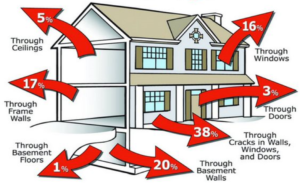This morning we kicked off our first Safety Seminar of the decade on the topic of ‘Exposure to Hazardous Chemicals in Construction’. We were incredibly fortunate to have two stellar guest speakers, some legendary bacon and egg breaky burgers, and fresh, hot coffee to ensure everyone was awake and attentive, in preparation for our pop quiz at the end. Just kidding, there was no pop quiz. We’re saving that for after you’ve read this little refresher.
Our first speaker was the wonderful Carolyn Topping from Workplace Health & Safety Queensland. Carolyn is an Occupational Hygienist and gave a thorough rundown of hazardous chemicals and how to deal with them.
Some things she touched on…
The Big 5 Construction Chemicals
- Asbestos
- Formaldehyde
- Diisocyanates
- Resins
- Silica
What are your key duties (as a construction worker) under legislation?
- Label containers and pipework
- Maintain safety data sheets
- Maintain a register of hazardous chemicals
- Store appropriately
- Contain and manage spills
- Manage worker exposure
- Provide health monitoring
What are the priority infringement offences?
- Failure to have a register of hazardous chemicals
- Failure to keep register up to date
- Failure to make register readily available to any worker or anyone else likely to be affected by a hazardous chemical
- Failure to comply with an improvement notice within specified timeframe
Want more information?
- Office of Industrial Relations
- worksafe.qld.gov.au
- Infoline 1300 362 128
- Hazardous chemical register template
- Hazardous chemicals – storage and handling
- Hazardous exposures – health
- Safe Work Australia
- Hazardous chemical register template
We then moved onto our second speaker, the delightful John Moynihan. John focused on the creating “healthy houses” with clean air, and the responsibility of the construction industry in facilitating this.
We started off by looking at the various air exchange for a typical house:

He touched on the fact that all buildings have some areas where unintended air transfers will occur, the majority of which go undetected unless they are experienced by an occupant (i.e. draughts moving curtains, infiltration of external noise etc.).
Moisture, John said, was one of the most important and least recognized indoor air problems and can have a significant impact on human and building health.
So how can we minimize this leakage?
- You may be creating leakage opportunities when you are specifying and detailing project
- Become familiar with the key leakage points and ensure the team is aware of the high-risk areas and how to minimize the leakage
- Test the building on two occasions, first when the building is at lock up and second just pre practical completion
- You can use air tightness membrane and tapes to control air infiltration
A massive thank you to our two presenters and Jo’s Café for their help in creating another great Seminar! Also a special shout out to Allens Industrial Products for their display table and examples of relevant (and very attractive) PPE equipment for construction workers. You can find them here: https://www.allensindustrial.com.au/
Join Our Newsletter
